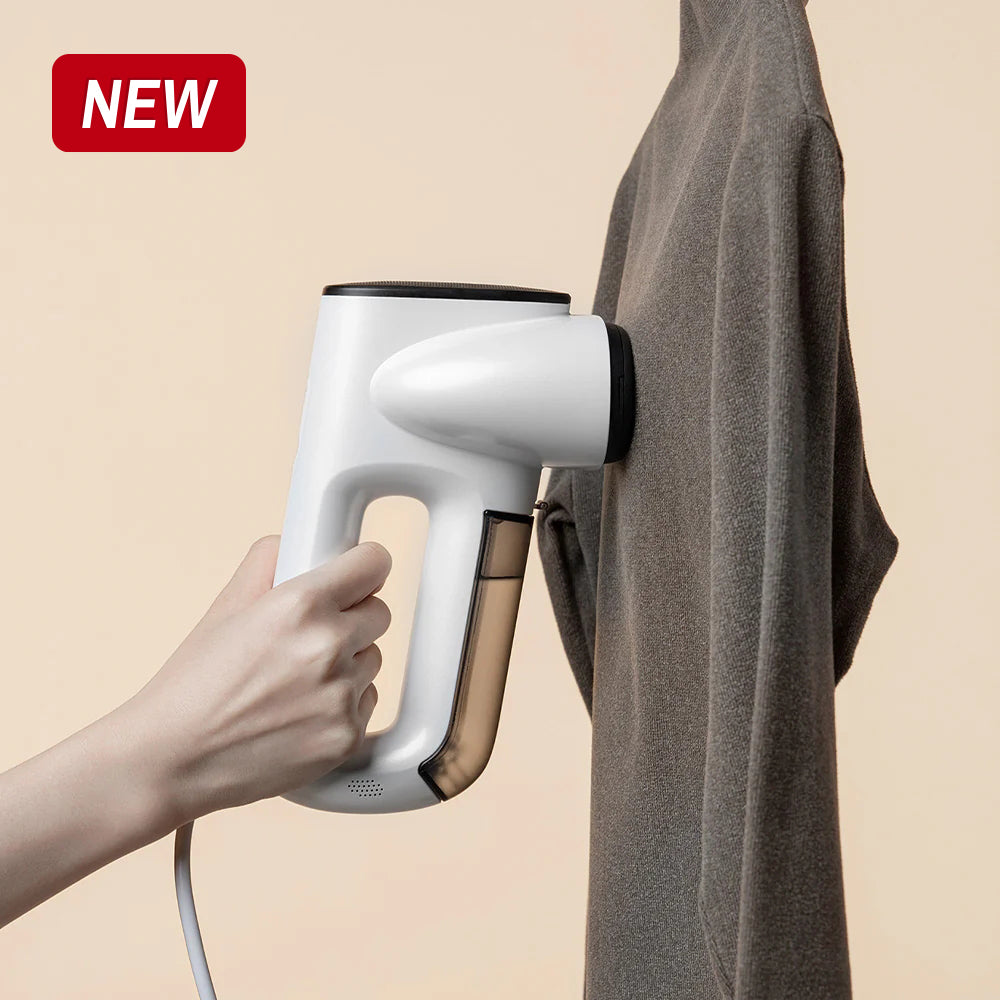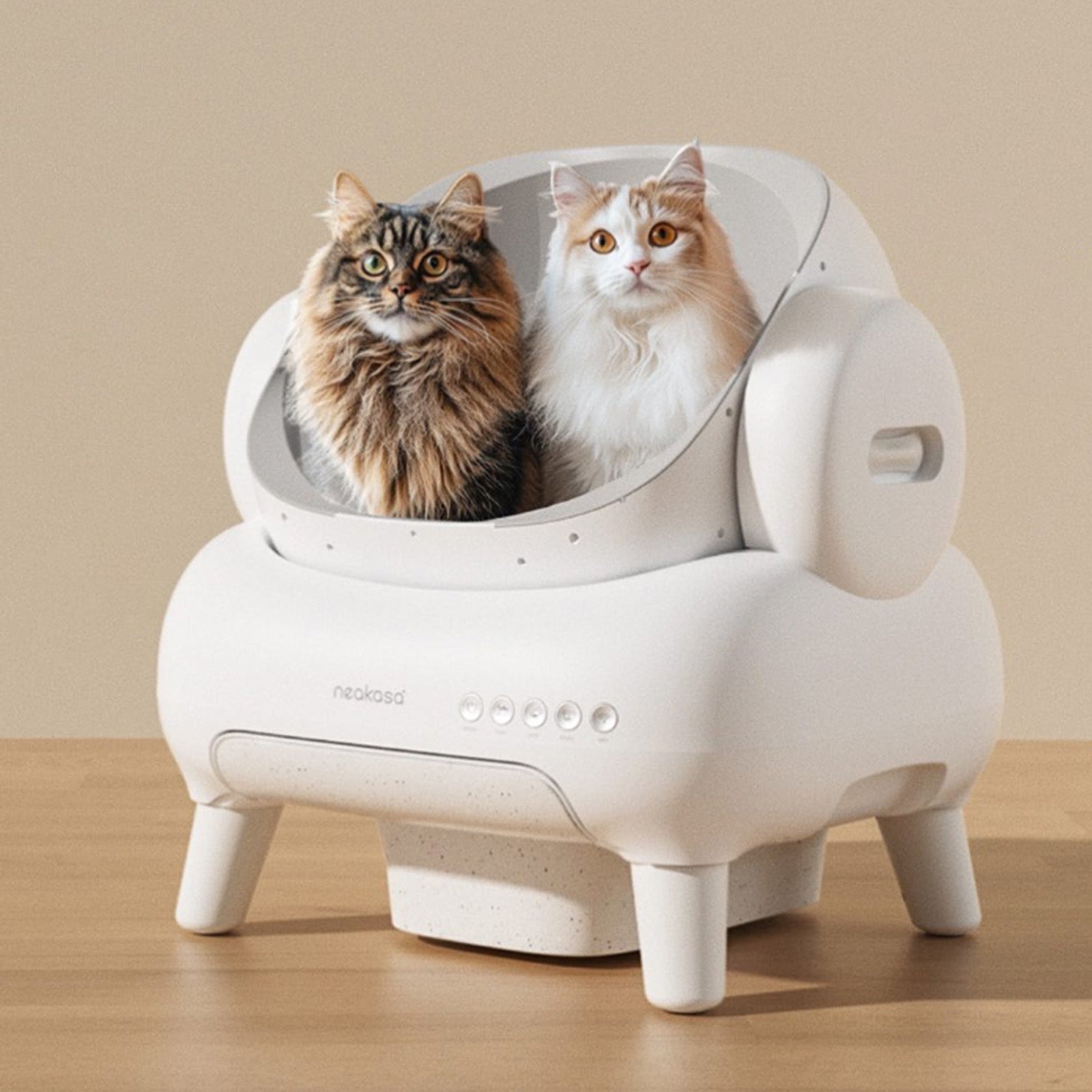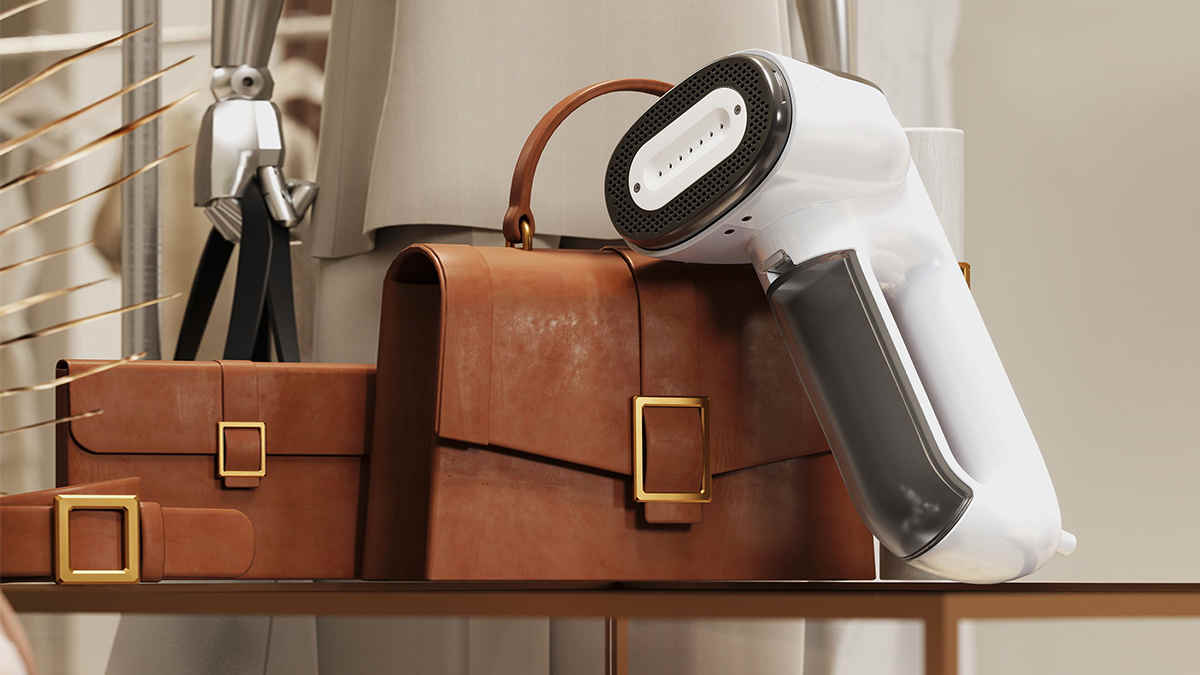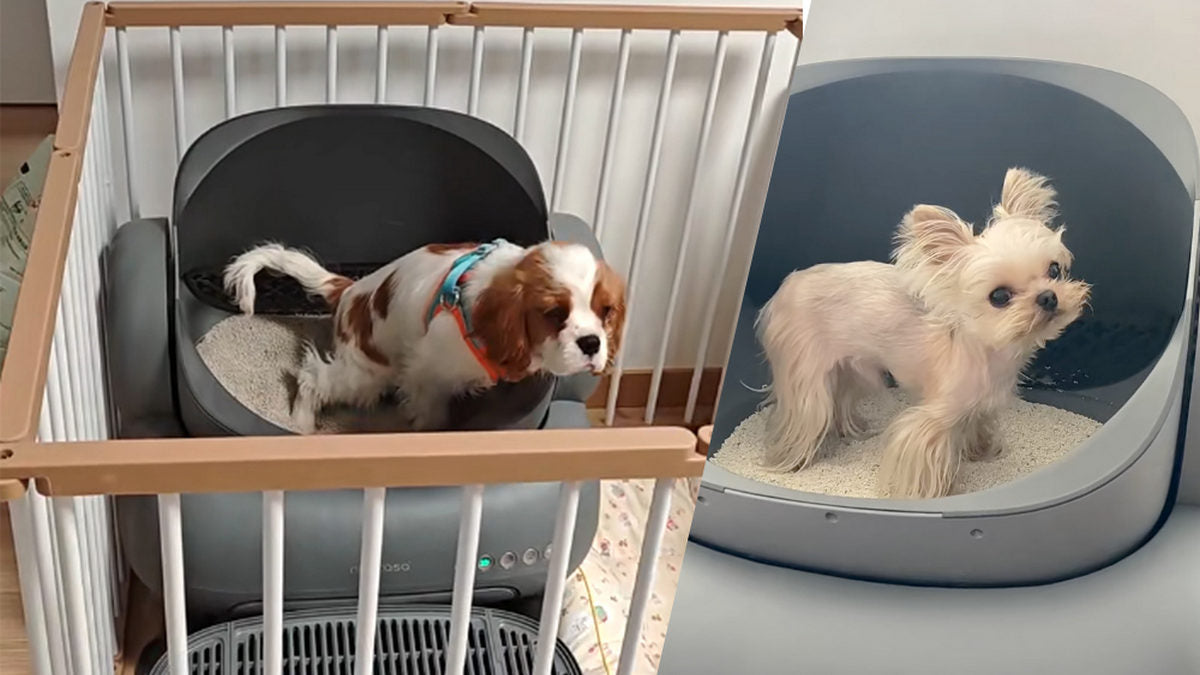Have you ever stood outside in the pouring rain, freezing cold, or scorching heat, waiting for your small dog to do their business? Or perhaps you live in a high-rise apartment where taking your furry friend downstairs multiple times a day feels like an endless chore?
For decades, we've held onto the belief that litter boxes are exclusively for cats. But what if I told you that your small canine companion could potentially use a litter box too? Yes, you read that right! For many small dog owners, a litter box could be an unexpectedly convenient solution to outdoor potty breaks.
In this article, we'll explore whether small dogs can effectively use litter boxes and take a closer look at one product that might be particularly suitable for this purpose—the Neakasa litter box.

Rethinking “Dogs + Litter Boxes”:Can dogs use litter boxes?
The answer is yes! For many pet parents, "litter box" means cats, not dogs. This makes sense! Dogs usually go potty outside, no matter the weather. But times are changing, and so are our needs for comfort and convenience—both for us and our pets. So let's explore whether litter boxes could work for small dogs too.
Small dog breeds actually have some advantages here. They don't need much space, which means they need less bathroom space too. Many small dogs also get into regular potty routines, making it easier to teach them to use one spot—just like a litter box!
Many owners have had success with this approach. Some share stories online about their Chihuahuas who started using litter boxes almost right away. Others talk about their Toy Poodles who learned during rainy seasons when walks weren't an option. While not every dog will adapt this easily, these stories show it's definitely possible with some patience.
Instead of thinking of litter boxes as "cat-only," try seeing them as indoor potty stations. When used correctly, they can give both you and your small dog more freedom and flexibility in your daily routine.
How to Choose the Right Litter Box for Your Dog
Why Might Neakasa Litter Box Be an Ideal Choice for Small Dogs?
The Neakasa litter box could be a great indoor potty option for small dog owners. While most litter boxes are made for cats, this one has several features that might work better for dogs—especially small breeds.
Easy-to-Enter Opening
The entrance to the Neakasa box is about 17 inches wide and 13 inches tall(Height is only 8 inches with the step). That’s bigger than most cat litter boxes. Since many small dogs stand around 6 to 10 inches tall at the shoulder, this size lets them walk in easily. No awkward jumping or squeezing needed.
More Room Inside
The box provides plenty of room for your dog to move around, and can accommodate pets up to 33lbs. That’s enough room for them to turn around and find the right spot. Dogs often like to circle before they go, so this extra space makes a difference.
Safe for Pets
Neakasa uses materials that are safe and non-toxic. That matters because some dogs like to sniff, lick, or even chew on things more than cats do. You can also clean it with pet-safe disinfectants without damaging the box.
Simple to Clean
The inside of the box is smooth, and its parts are easy to take apart. That means you can clean it quickly and keep it fresh. A clean box helps prevent smells and makes your dog more likely to keep using it.
Some customers have already seen success. One user shared, “I bought this for my cat but discovered my 7-pound Yorkshire uses it too! The large opening makes it easy for him to enter, and the depth keeps the litter contained despite his digging habit.”
How to Train A Small Dog to Use Litter Box
Successfully transitioning your small dog to a litter box requires patience and a strategic approach. Here's how to maximize your chances of success with the Neakasa:
1. Choose the right litter: Select a dog-specific litter or one that's safe for canine use. Avoid clumping cat litters, which can cause health issues if ingested by dogs. Paper pellet litters, specialized dog litters, or even artificial grass pads can work well with the Neakasa's design.
2. Strategic placement: Position the Neakasa in a quiet, accessible location—ideally near where your dog already has accidents or shows interest in eliminating. The Neakasa's compact but adequate size makes it easier to place in bathrooms or utility areas without overwhelming the space.
3. Scent training: Place a small amount of your dog's urine (collected on a paper towel from an accident) in the litter box to help them understand its purpose. The Neakasa's design helps contain these training scents effectively.
4. Consistent schedule: Take your dog to the Neakasa at likely elimination times: after meals, naps, or play sessions. The distinctive shape of the Neakasa helps dogs recognize it as their designated spot over time.
5. Positive reinforcement: Reward successful use with immediate praise and treats. Never punish accidents, as this can create negative associations with elimination in general.
6. Gradual transition: If your dog currently uses pee pads, consider placing one in the Neakasa initially, then gradually transitioning to your chosen litter material.
The Neakasa's easy-clean design is particularly valuable during training, as accidents and partial successes will require frequent cleaning to maintain proper hygiene and prevent odors that might deter your pet from continued use.
Conclusion
For small dog owners facing weather challenges, living in apartments, or dealing with mobility issues, indoor potty solutions like litter boxes can be life-changing. While not every small dog will adapt to litter box use, many can successfully learn this convenient habit with proper training and equipment.
The Neakasa litter box, with its larger opening, appropriate size, and thoughtful design, addresses many of the common obstacles that prevent dogs from using traditional cat litter boxes. Its sturdy construction and easy-cleaning features make it a practical option worth considering for small dog owners.
Whether you're looking for a nighttime solution, bad weather alternative, or full-time indoor potty option, the Neakasa might just be the answer to creating a more comfortable routine for both you and your small canine companion. After all, convenience doesn't have to be just for cat owners—small dogs deserve practical solutions too!









Leave a comment
This site is protected by hCaptcha and the hCaptcha Privacy Policy and Terms of Service apply.